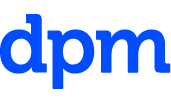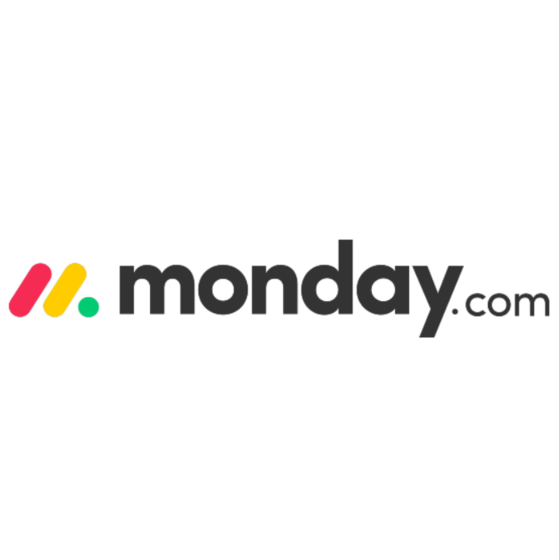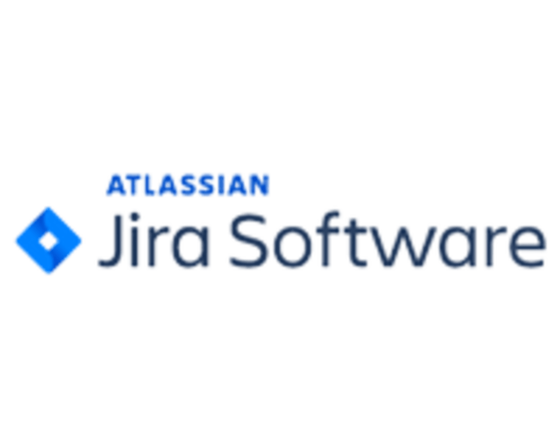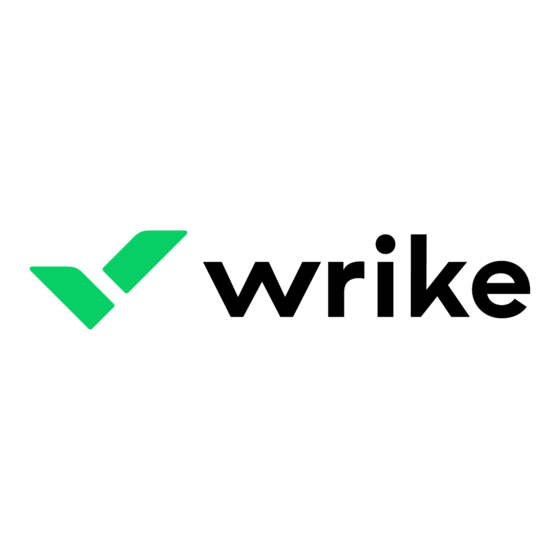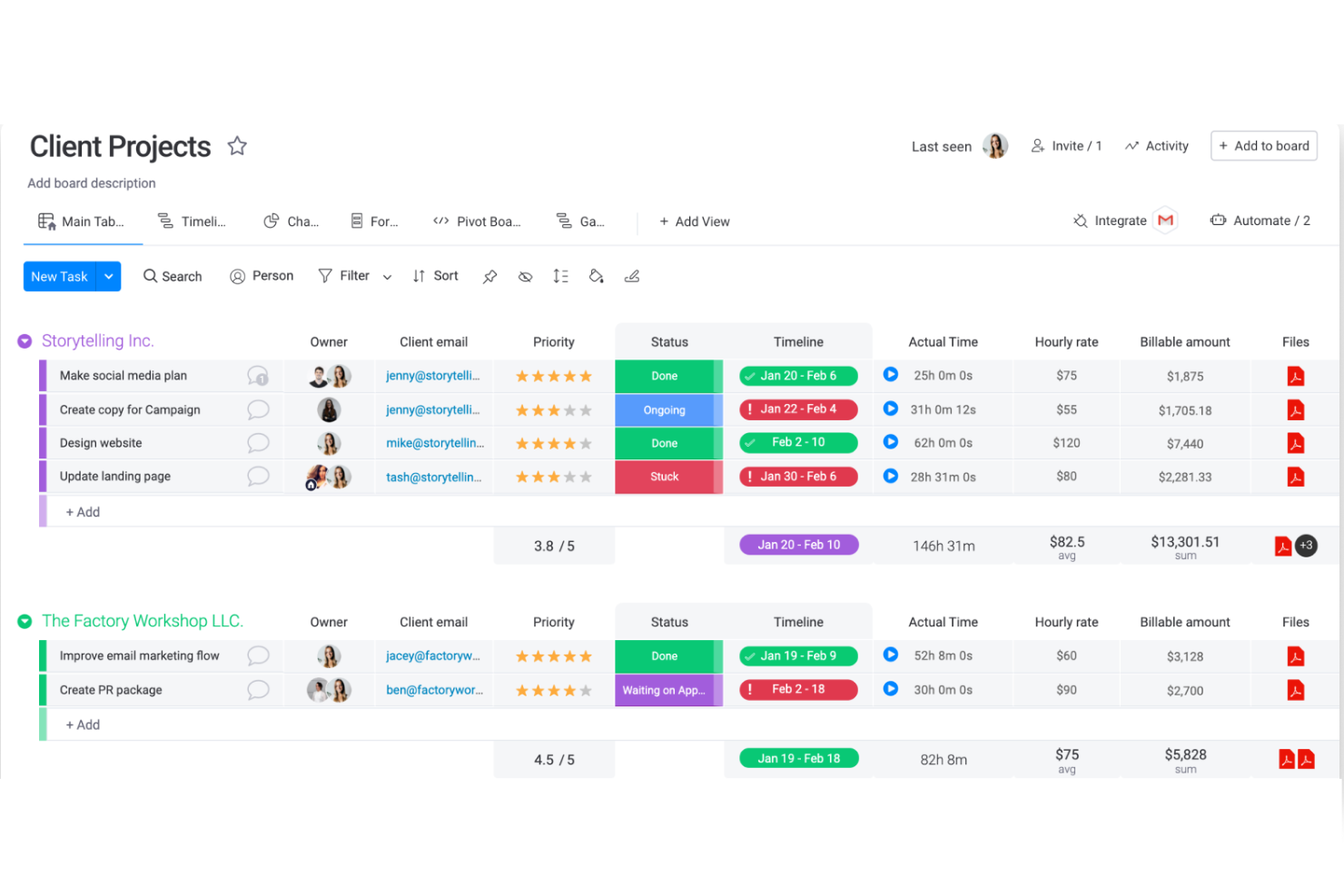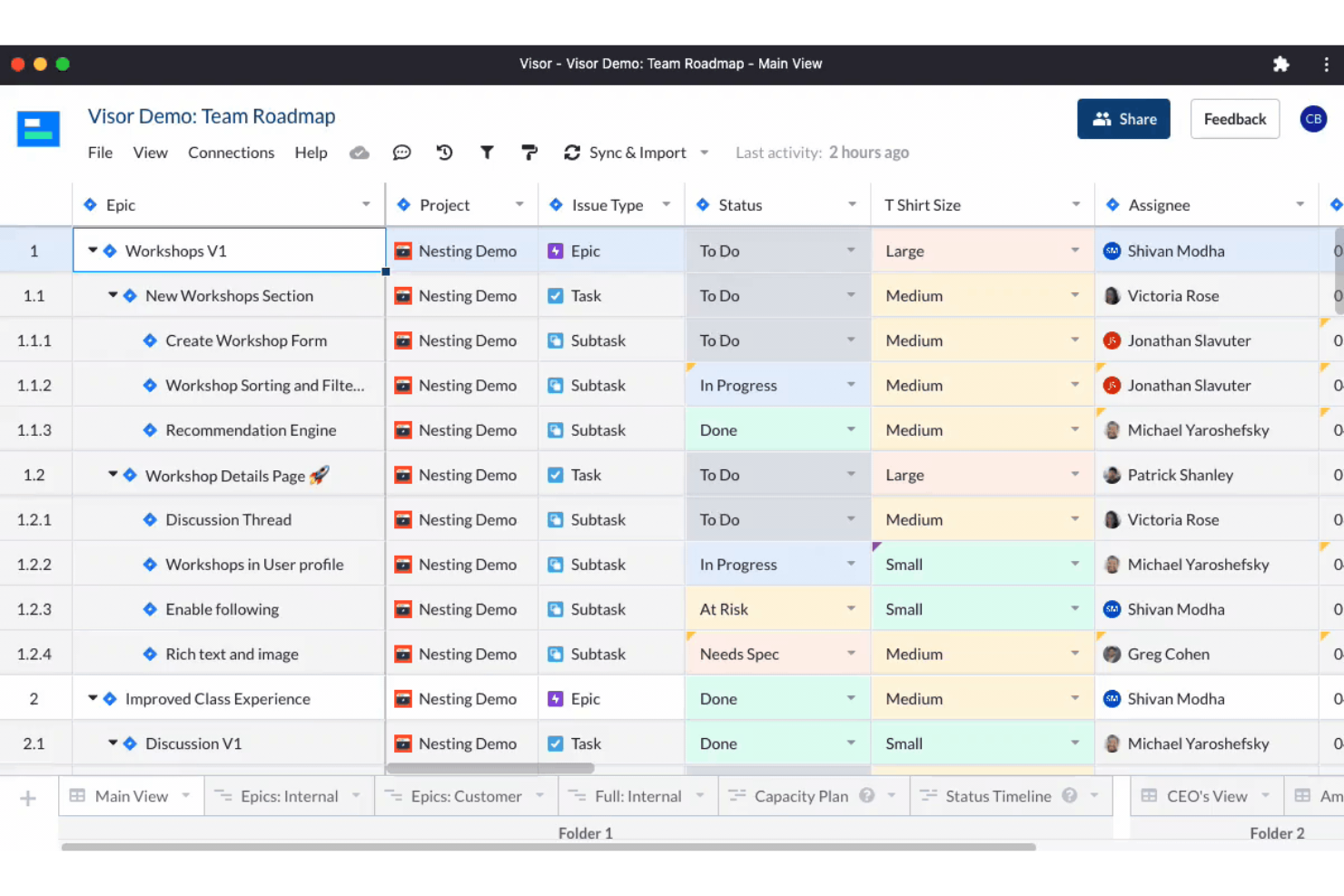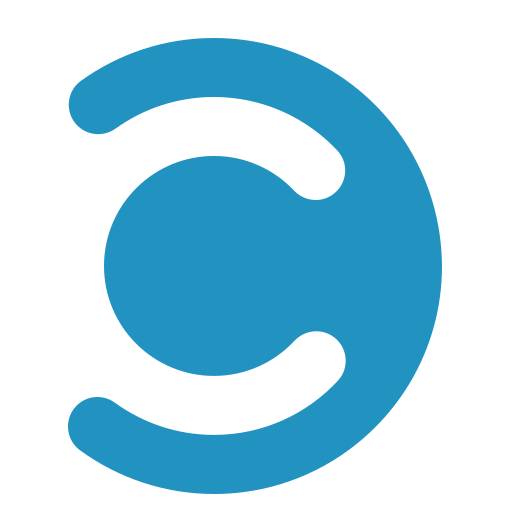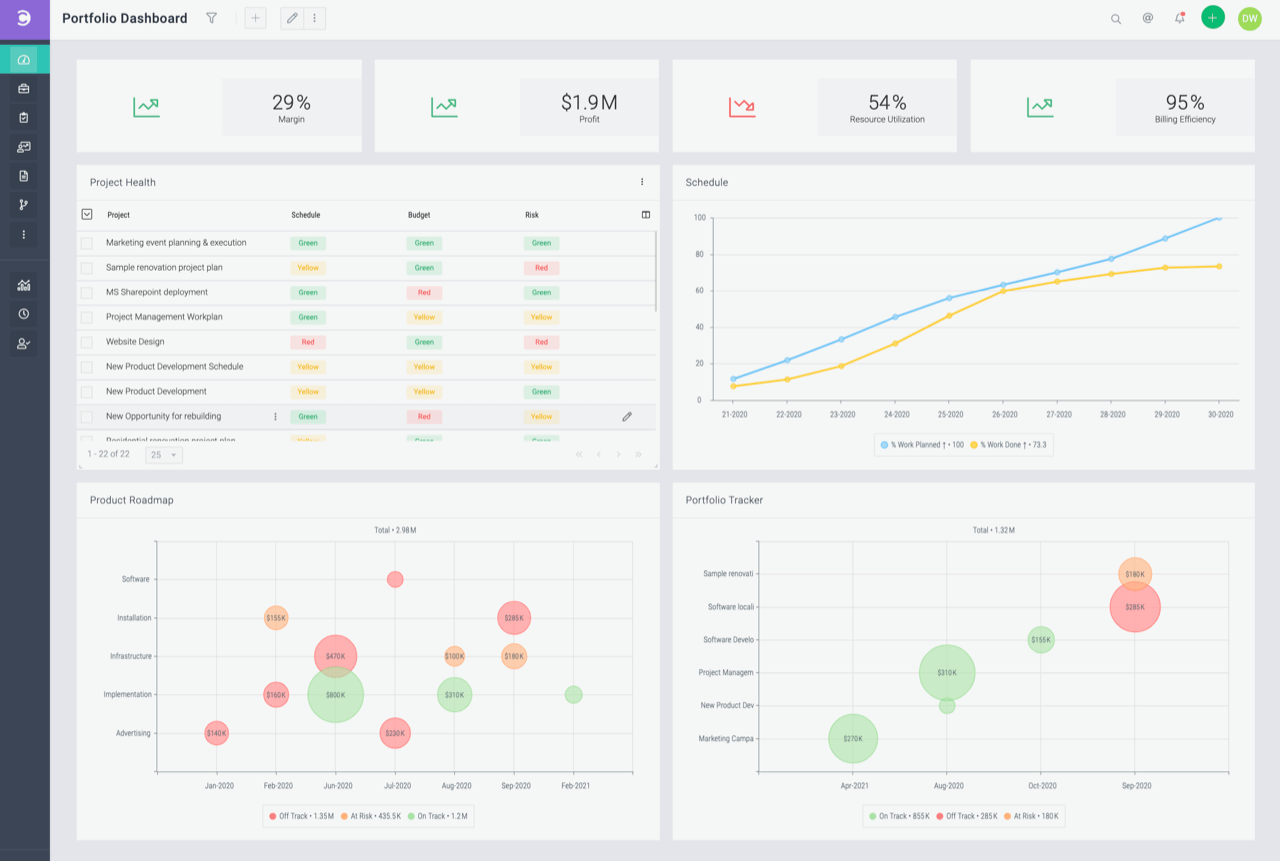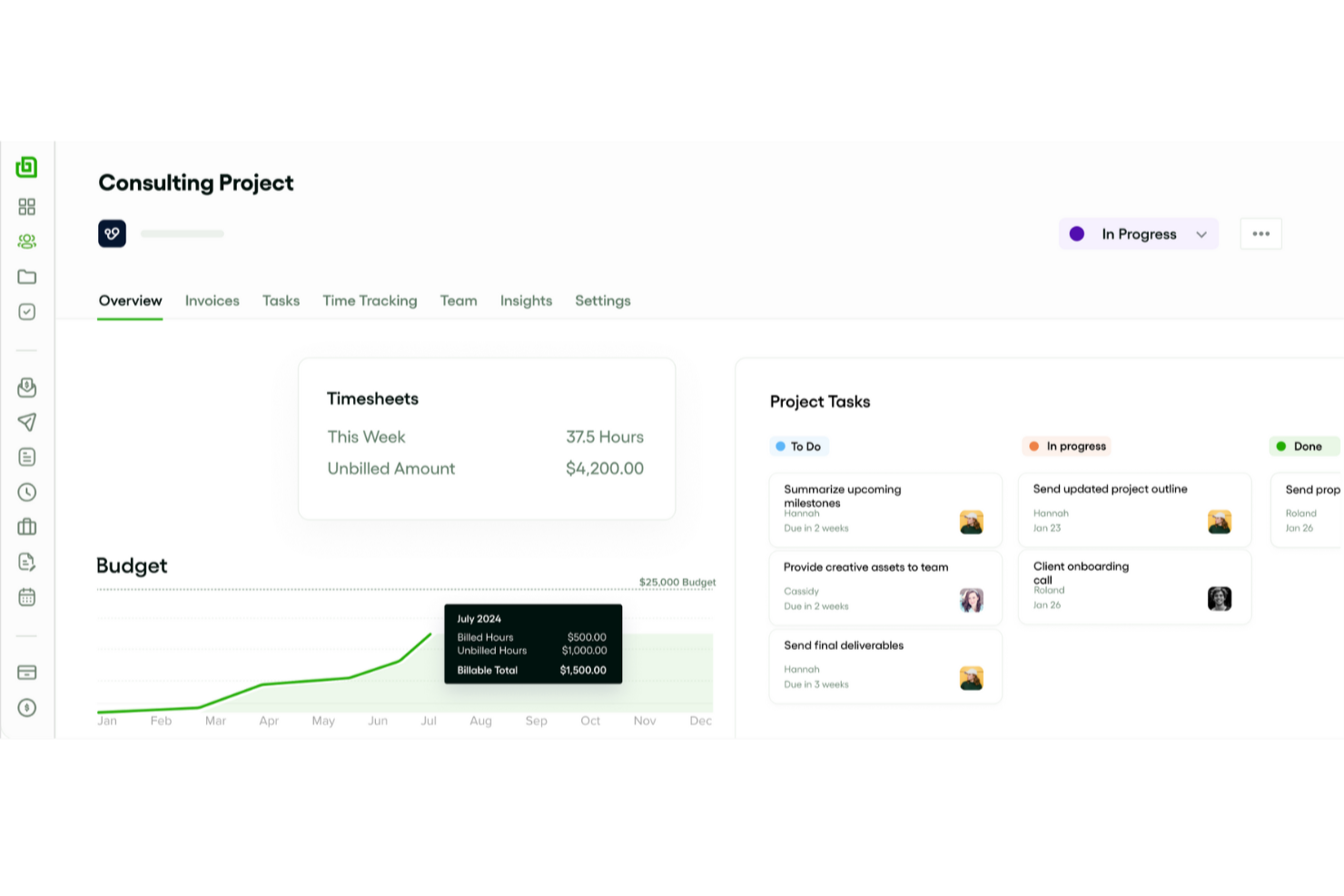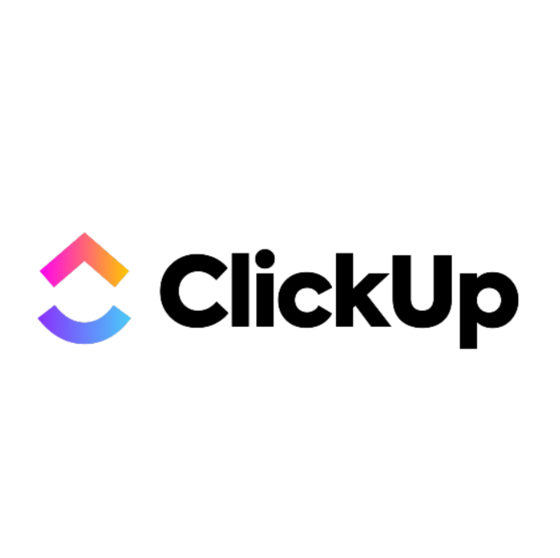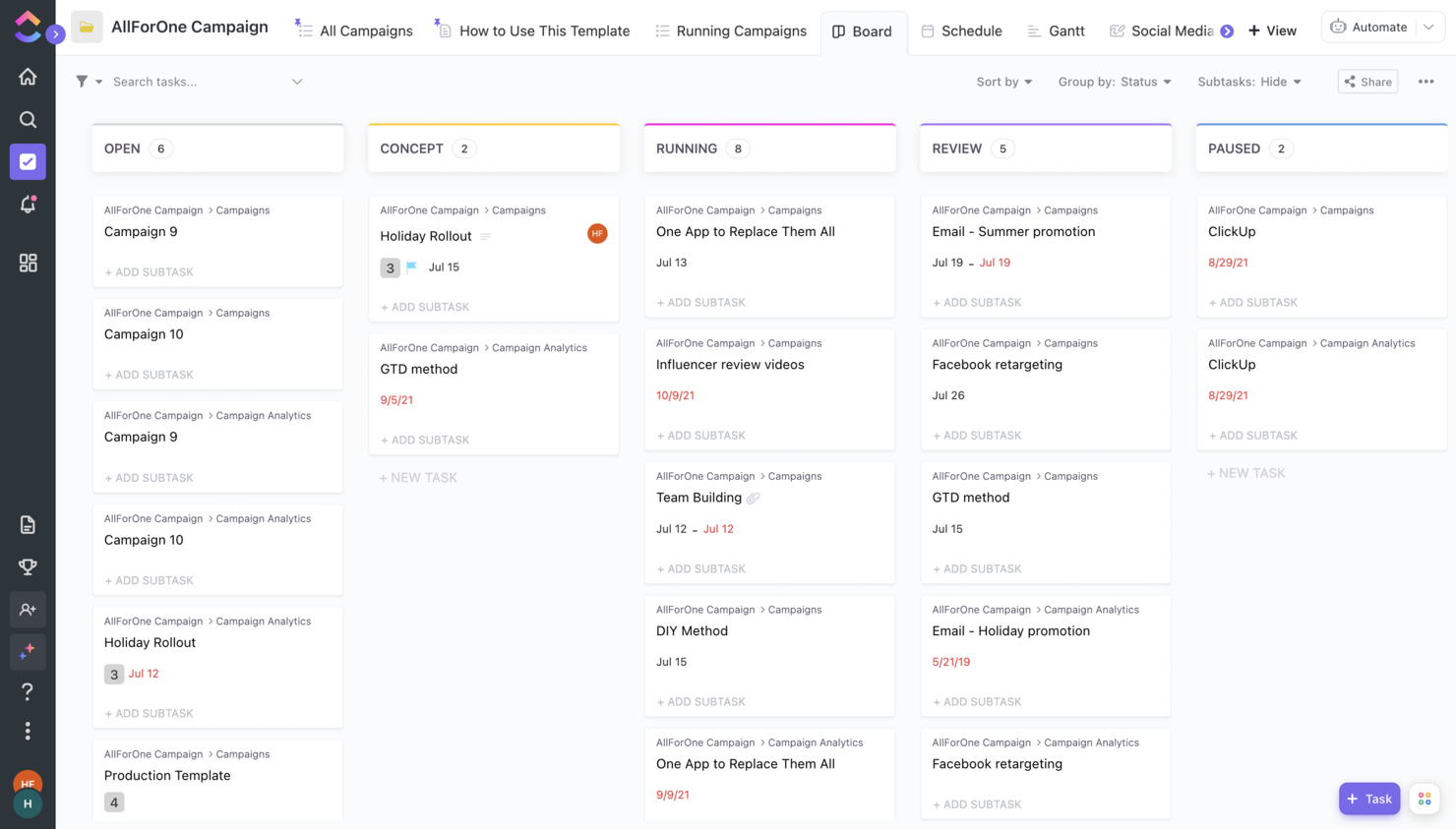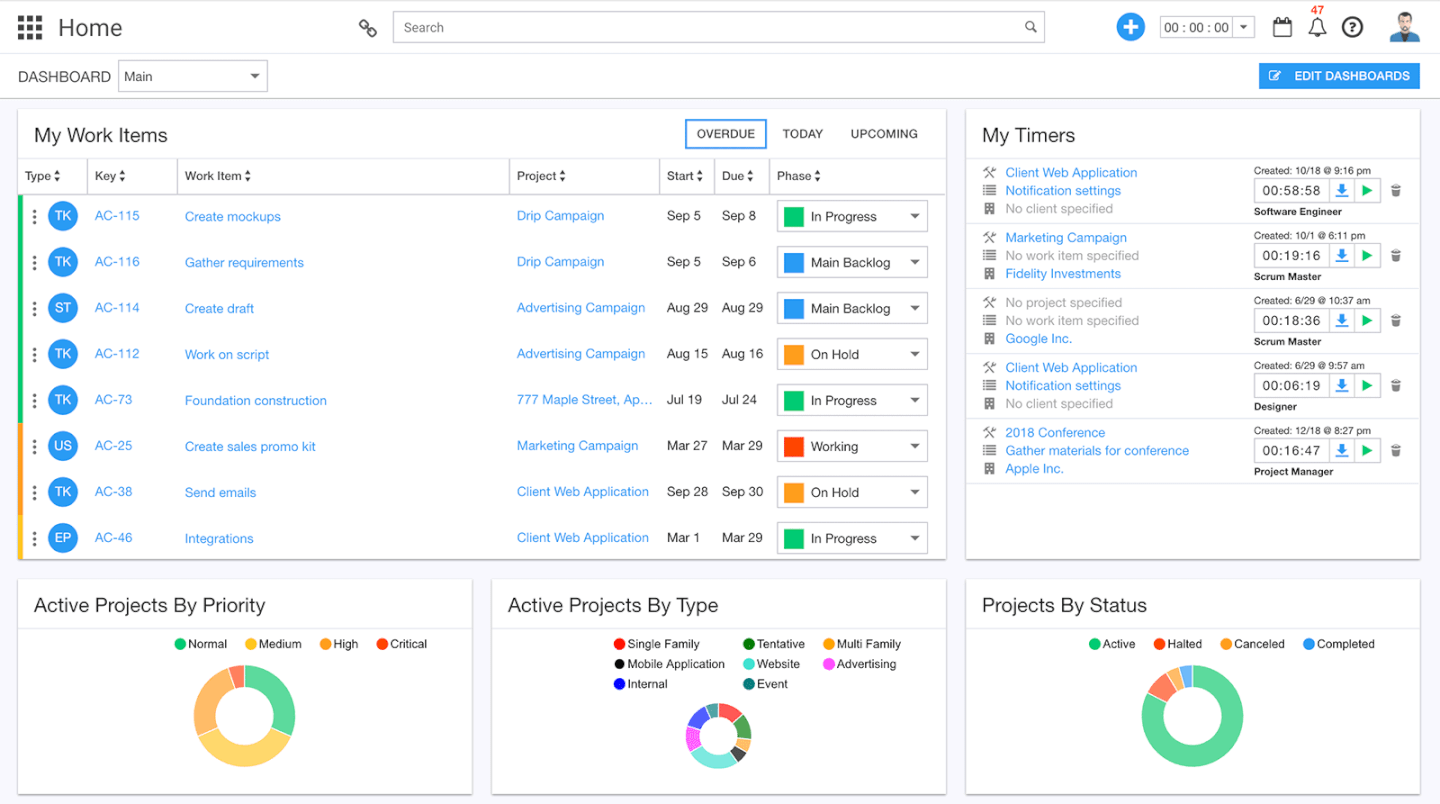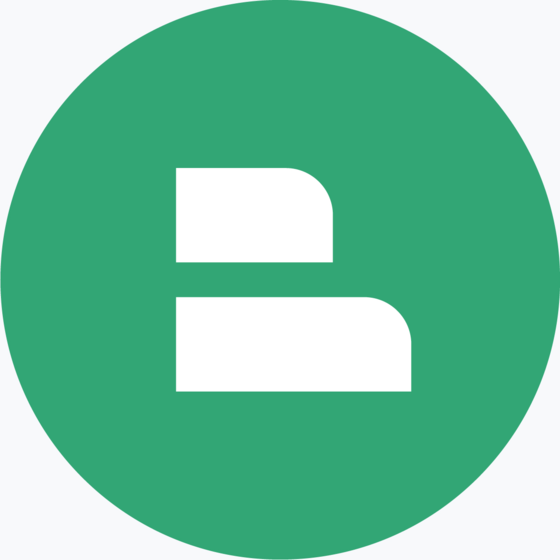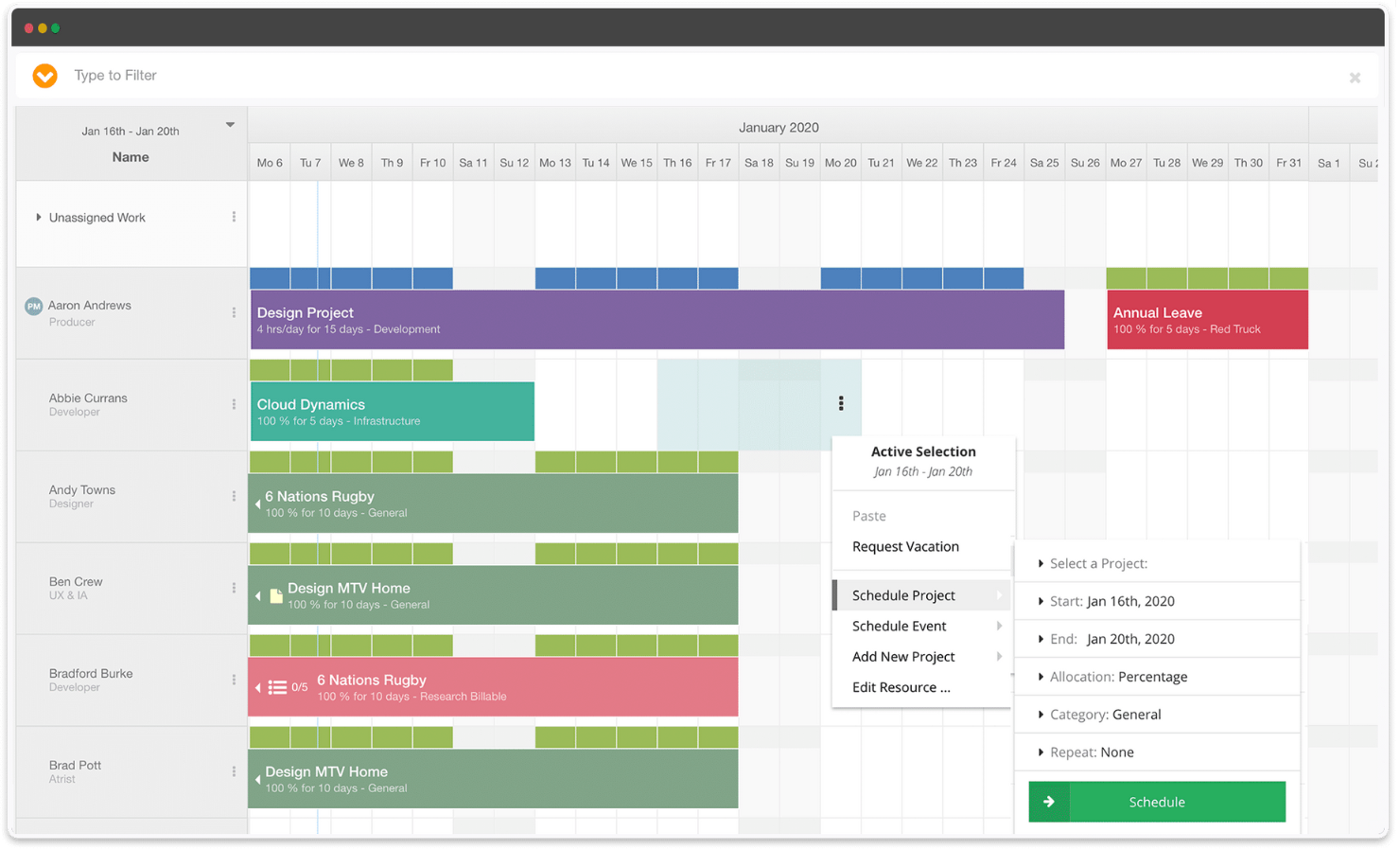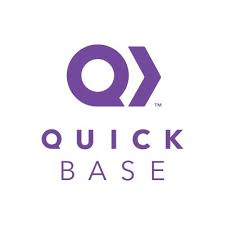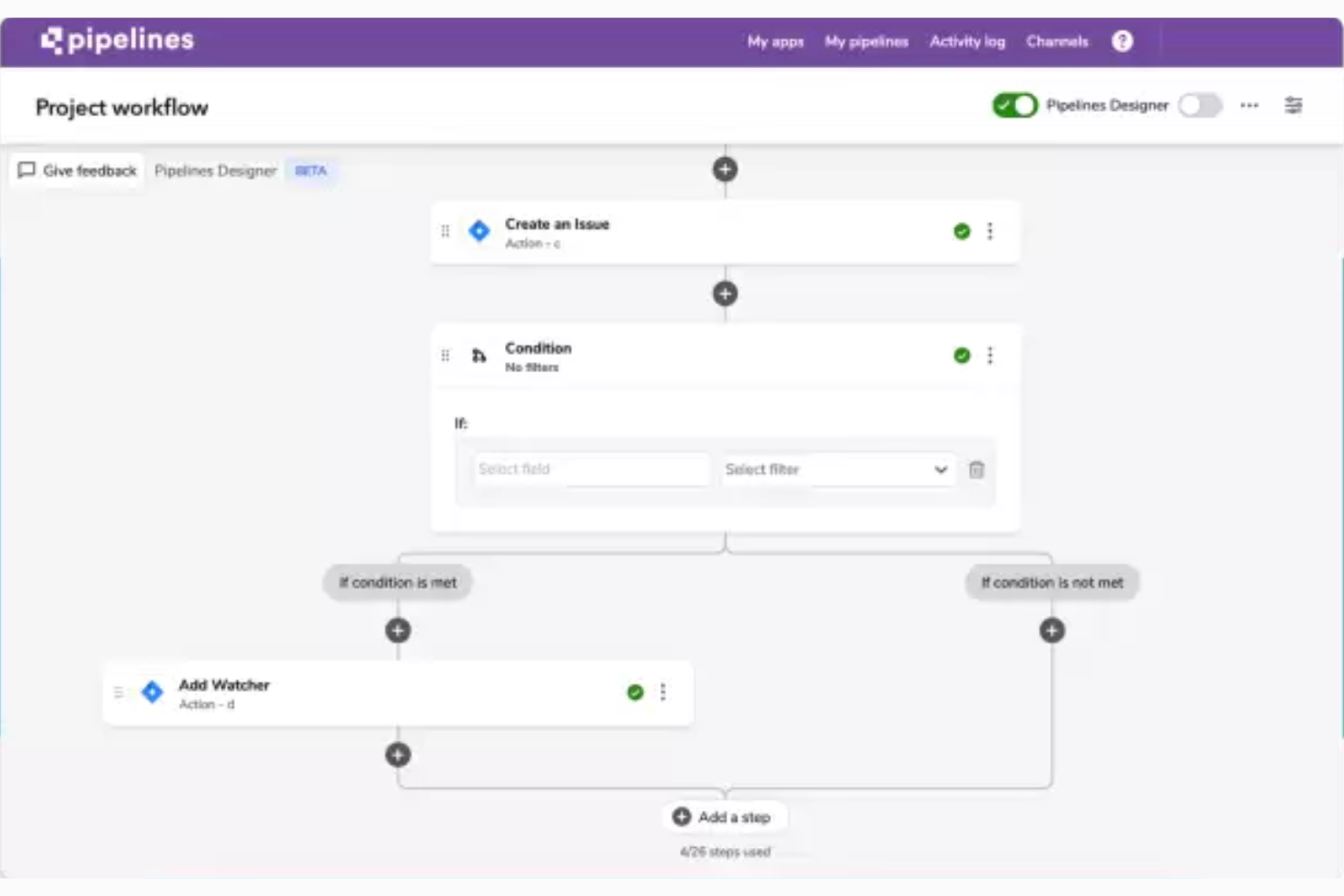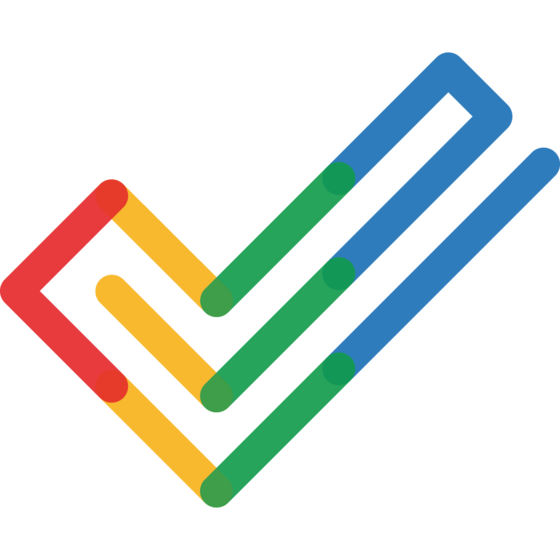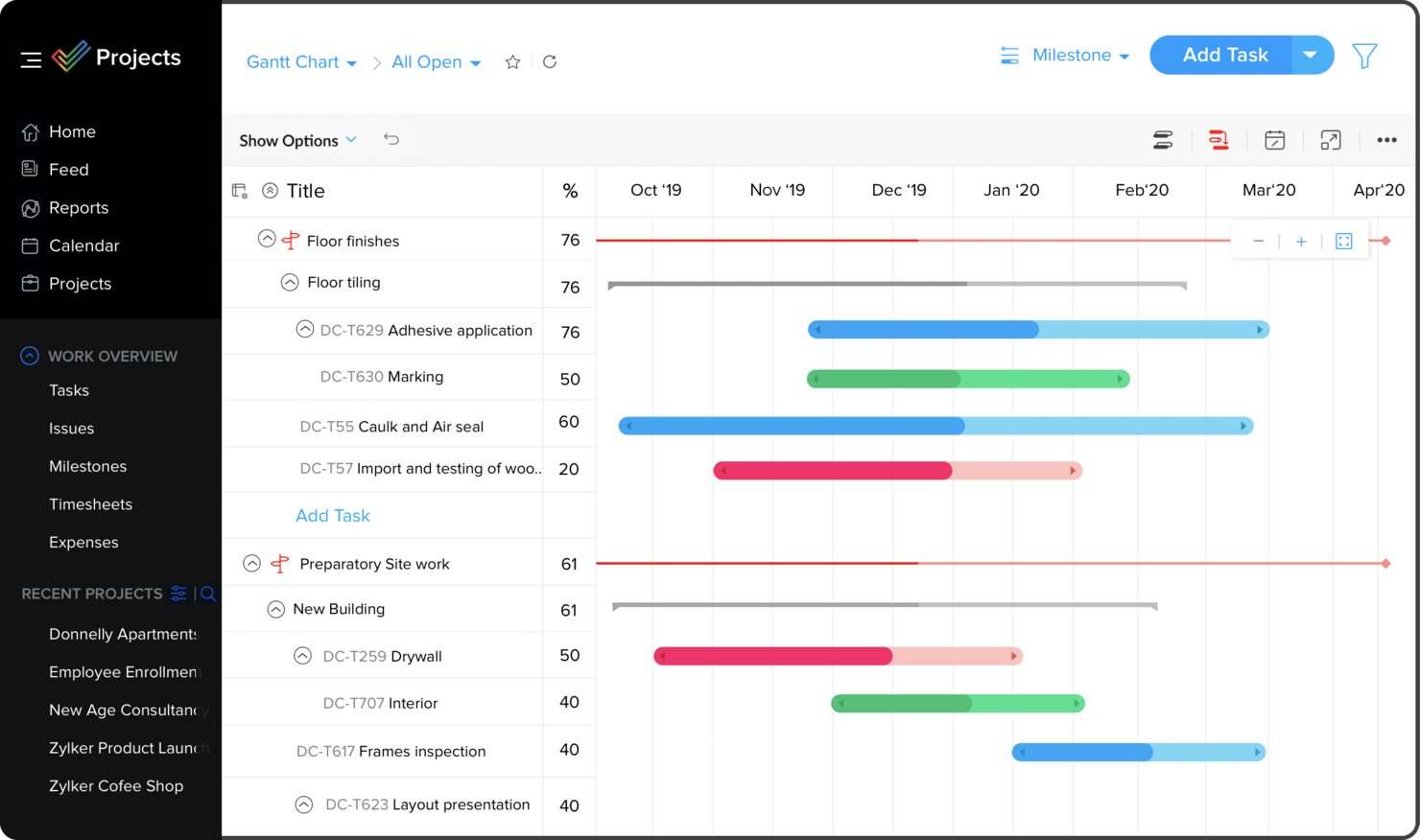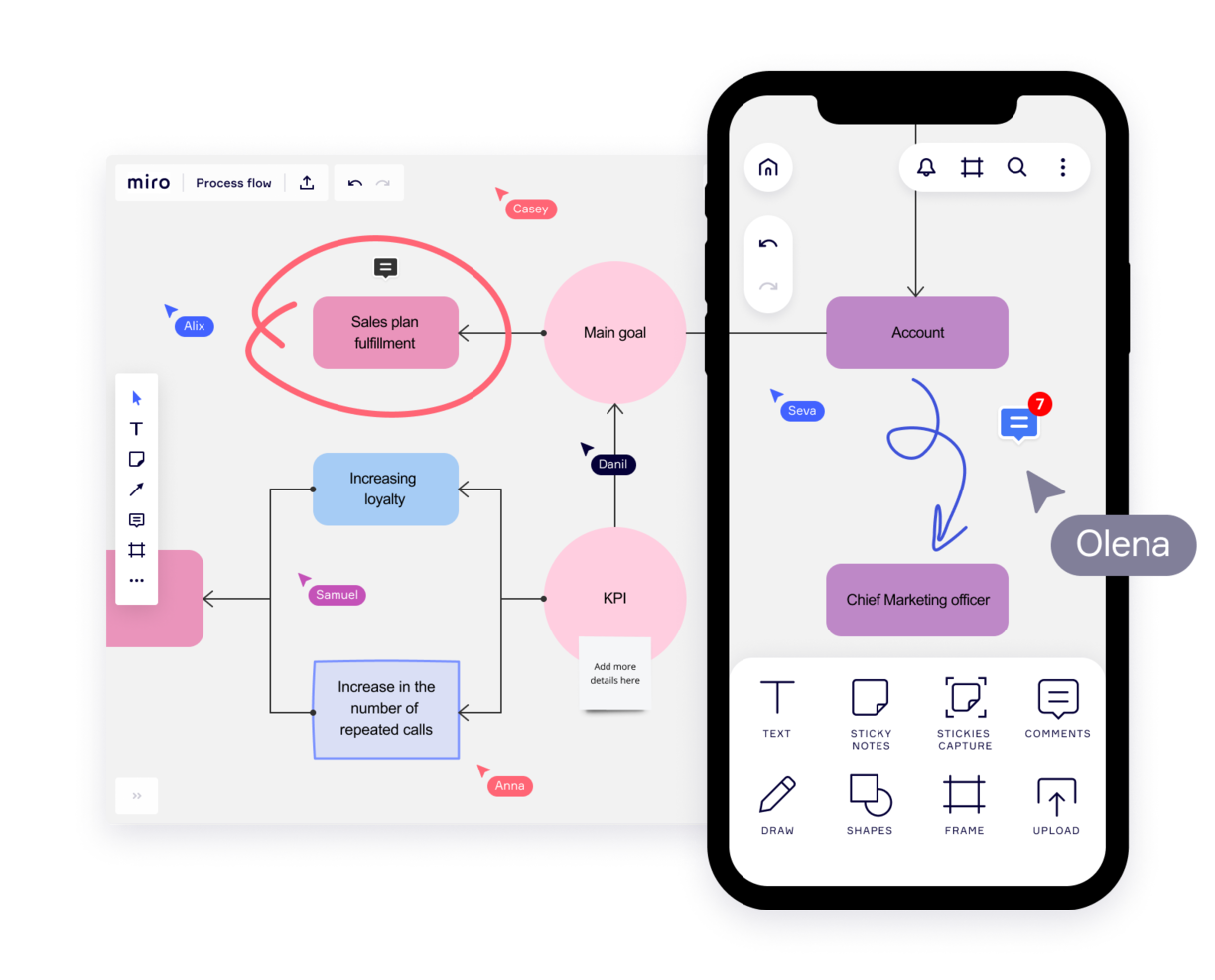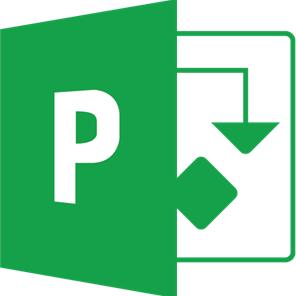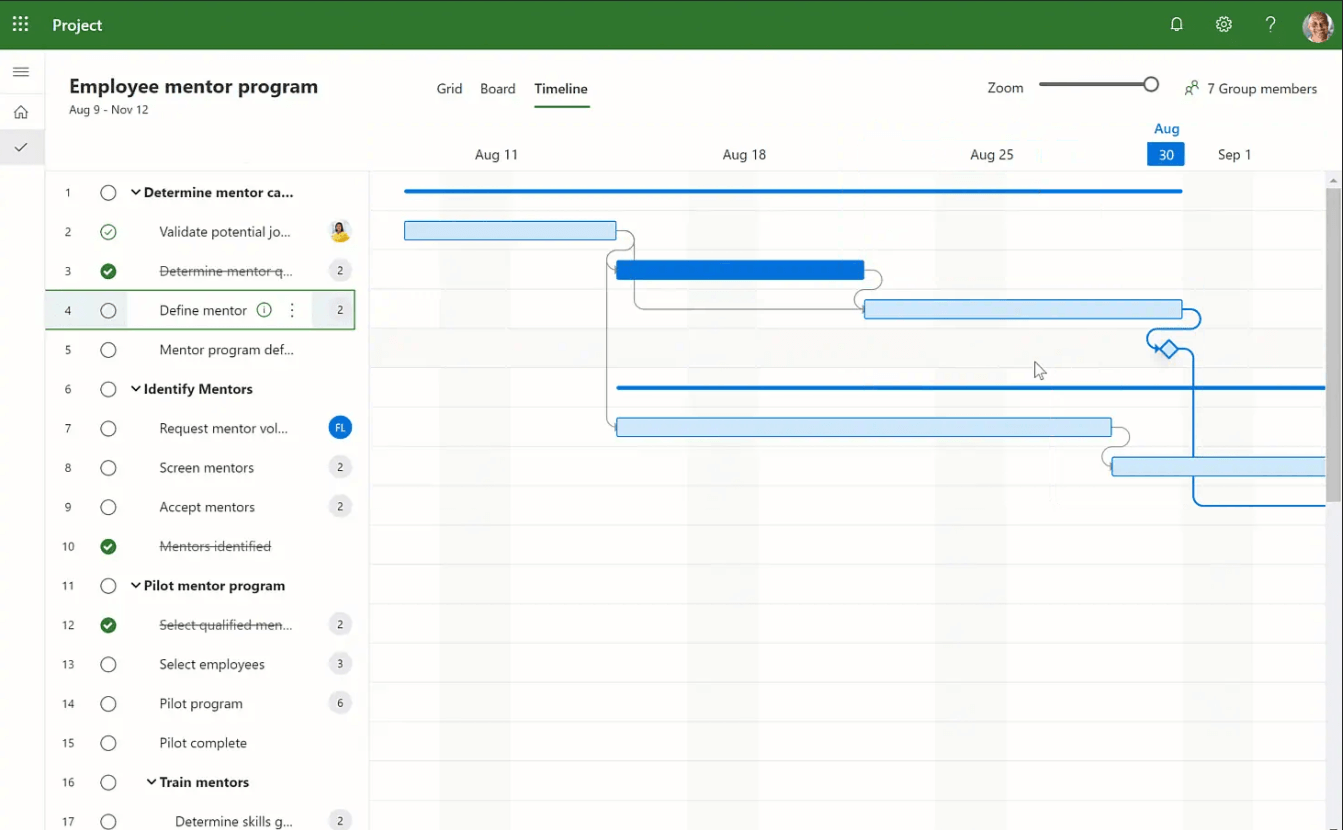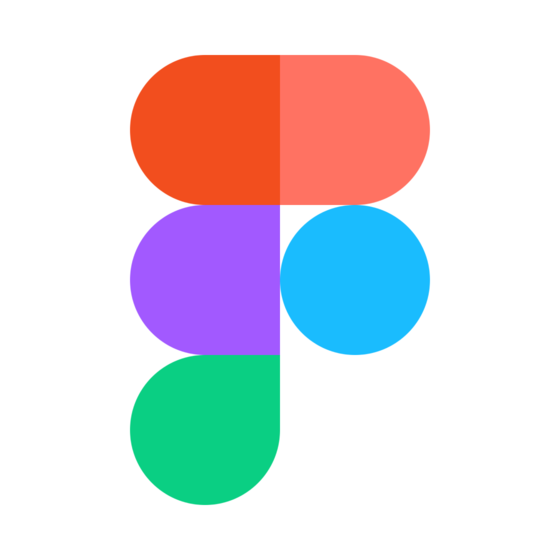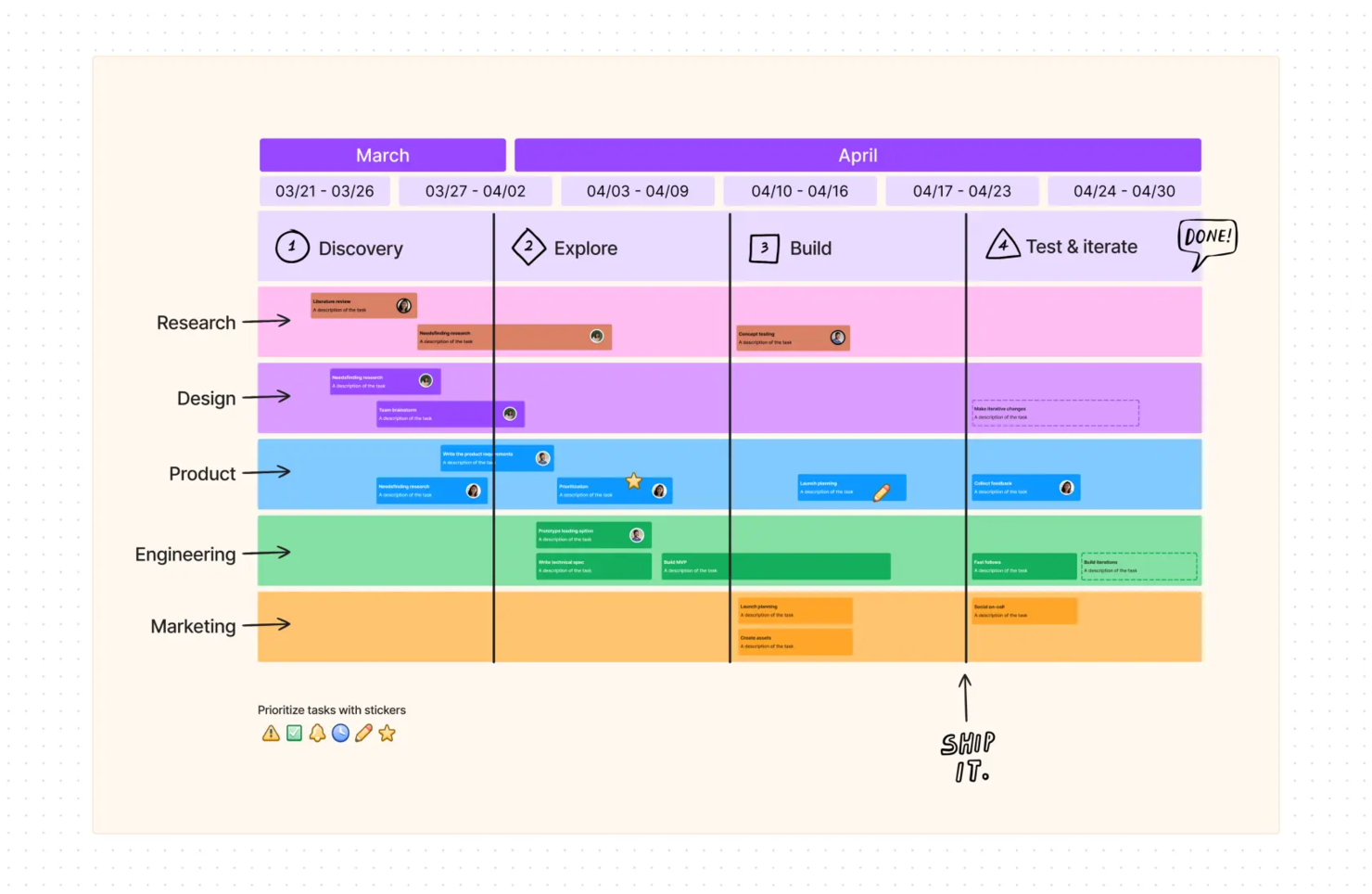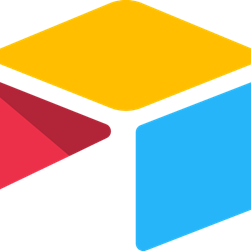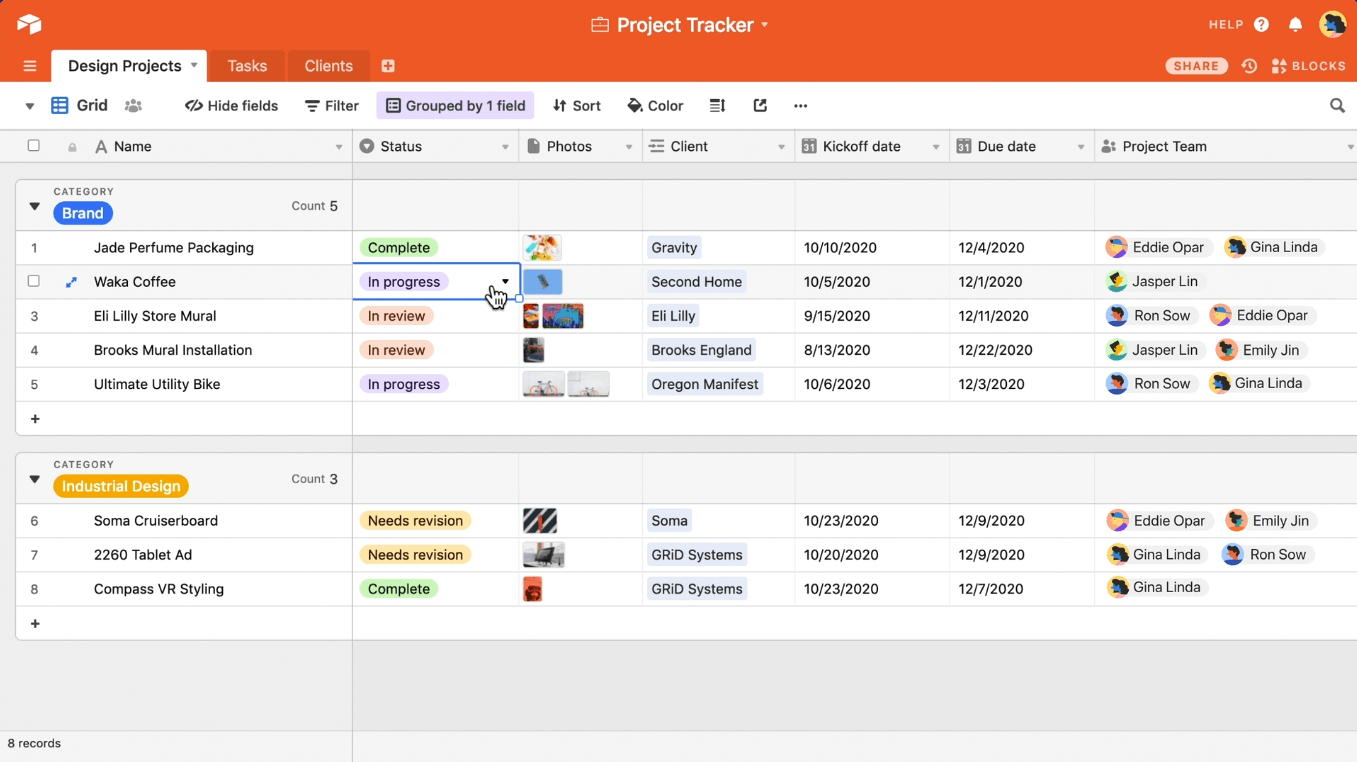15 Quels sont les meilleurs outils de gestion de projet?
Here's my pick of the 15 best software from the 26 tools reviewed.
Vous trouverez ci-dessous un aperçu de ces outils de gestion de projet, avec des captures d’écran, les fonctionnalités, les prix et notre note.
Notions de base de la gestion de projet
Que sont les outils de gestion de projet?
Lorsque nous parlons d’outils de gestion de projet, nous parlons de deux choses :
- Les rapports, les graphiques, les mémoires, les plans et les documents qu’un chef de projet produit et utilise pour faire son travail.
- Le Logiciel de gestion de projets, qui comprend des fonctions de génération de graphiques et de rapports, de partage de documents, de suivi de budget, de communication, etc.
Dans cette revue, nous utilisons le terme “outils de gestion de projet” pour parler de la deuxième définition – le logiciel. Pour obtenir d’excellentes ressources sur les autres types d’outils (rapports, graphiques, mémoires, plans), commencez par jeter un coup d’œil à Guide du Chef de Projet Digital “Comment faire” .
Pourquoi utiliser un logiciel de gestion de projet?
Que ce soit dans les agences, les communications marketing ou le consulting, sans bon logiciel de gestion de projet, nous nous retrouvons noyés dans océan de feuilles de calcul, de post-it et de paperasse. En tant que chef de projet, notre trousse d’outils peut être la seule chose qui nous empêche de jeter le bébé avec l’eau du bain et d’avoir une effondrement total. Pour mener à bien les projets, nous avons besoin des bons outils pour les réaliser.
Qu’est-ce qu’un outil de gestion de projet Agile?
Les outils Agile sont des outils de gestion de projet conçus pour supporter une méthodologie Agile, qu’il s’agisse de Scrum, Kanban, Scrumban ou autres méthodes hybrides Agile. Voici quelques exemples d’outils Agile :
- Zenhub
- Taiga
- Pivotal Tracker
Trouvez d’autres outils Agile dans ma revue complète de logiciels de gestion de projet Agile.
Quel est le logiciel de gestion de projet le plus simple?
Selon les commentaires des utilisateurs, voici quelques outils logiciels de gestion de projet les plus faciles à utiliser.
Ils ont tous reçu des éloges pour leur navigation intuitive, leurs interfaces simples et leurs bonnes ressources de formation qui les rendent faciles à utiliser.
Jira est-il un outil de gestion de projet?
Oui. Jira, un outil développé par Atlassian, a commencé comme un outil de développement logiciel, mais il est maintenant utilisé pour le suivi des bugs, la gestion des problèmes et la gestion de projet. Il est conçu pour être utilisé dans le développement de logiciels Agile et offre des outils tels que des tableaux Scrum, des tableaux Kanban, roadmaps, des outils de gestion des flux de travail et des fonctions de reporting de projets ainsi qu’une application de développement logiciel.
Comment évaluez-vous les logiciels de gestion de projet?
Il existe une relation symbiotique entre nos outils et techniques de gestion de projet. Choisir les bons pour chaque cas unique est une pratique courante, mais vous pouvez commencer par les critères de base que j’utilise pour évaluer les logiciels de gestion de projet :
- Interface utilisateur : est-elle bien conçue avec des affichages clairs et une navigation intuitive?
- Facilité d’utilisation : est-il facile à apprendre? L’entreprise offre-t-elle de la formation, des tutoriels et du soutien technique et des services aux utilisateurs?
- Caractéristiques et fonctionnalités : fournit-il les fonctionnalités clés de gestion de projet comme la gestion des tâches, les outils de planification, les rapports, le partage de fichiers, les outils de collaboration?
- Intégrations : se synchronise-t-il facilement avec d’autres outils business?
- Valeur pour $ : le prix est-il raisonnable compte tenu de ses caractéristiques et de ses capacités?
Vous venez de réaliser que vous ne recherchez pas un logiciel de gestion de projet? Jetez un coup d’œil à d’autres outils utiles :
- Logiciel de planification des ressources pour vous aider à allouer l’équipement, les salles, le personnel et les autres ressources.
- Logiciel de gestion des flux de travail pour rationaliser votre collaboration, vos documents et vos charges de travail du début à la fin.
Dans cet article, vous trouverez une revue experte des outils de gestion de projet afin que vous puissiez choisir le meilleur logiciel de gestion de projet pour vos projets.
Dans les agences digitales à évolution rapide, le chef de projet moyen utilise probablement une douzaine d’applications de gestion de projet différentes pour rester à jouer avec sa liste de choses à faire en constante évolution. Cet article vous aidera à préciser les options pour choisir le bon logiciel de gestion de projet en répondant à certaines questions courantes et en offrant une comparaison des outils de gestion de projet ainsi que les critères utilisés pour les évaluer.
Comparez et évaluez rapidement les 15 meilleurs outils de gestion de projet
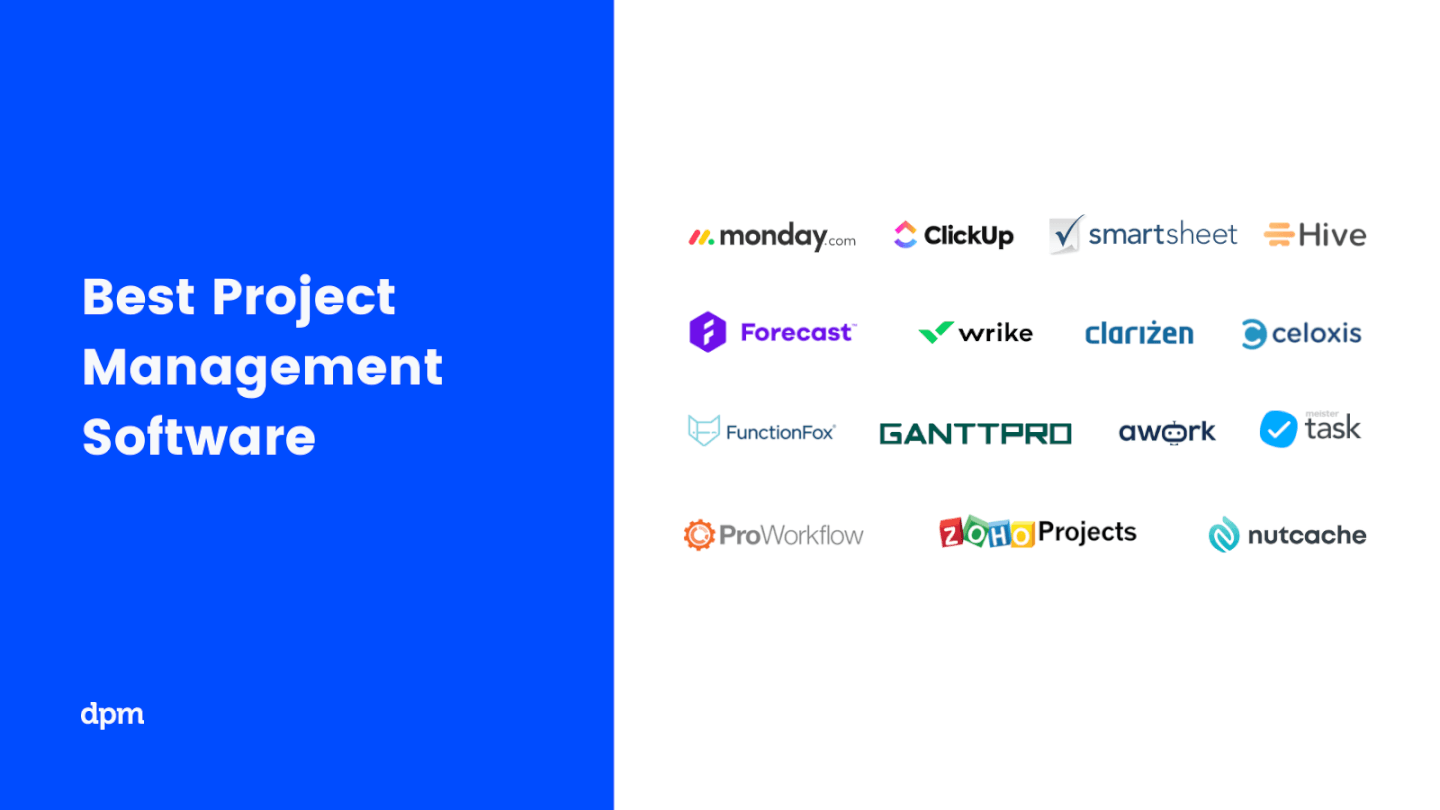
La gestion de projet est un secteur d’activité très vaste. Dans le cadre de la revue de nos outils de gestion de projet, nous avons sélectionné les plateformes qui conviennent le mieux aux environnements des agences. Bien sûr, certains d’entre elles peuvent s’adapter à différents environnements (informatique, santé, finance), mais nous nous concentrons sur la façon dont elles travaillent pour les équipes des agences numériques. Il s’agit notamment de :
- Projets de développement de logiciels
- Agences Web
- Agences créatives
- Agences de marketing digital (bien que vous auriez peut-être plus de chance avec notre revue spécifique sur les outils de gestion de projet des agences de marketing)
The Digital Project Manager est sponsorisé par le lecteur. Lorsque vous cliquez sur les liens de notre site, nous pouvons gagner une commission. En Savoir Plus.
Revues des 15 meilleurs outils de gestion de projet
Dans cet article, nous avons essayé de couvrir un large éventail d’outils de GP, en tenant compte de la complexité, des prix et des fonctionnalités. Mais cela dépendra de votre flux de travail et des fonctionnalités spécifiques dont vous avez besoin pour améliorer cette fonction. Jetez un coup d’œil, profitez des essais gratuits pour vraiment trouver les meilleurs outils de gestion de projet pour votre agence ou studio.
Poursuivez votre lecture pour trouver le meilleur logiciel de gestion de projet pour les agences et les studios :
monday.com is an award-winning project management platform that can help you build custom workflows for your projects.
Why I picked monday.com: I chose this tool because it's customizable in almost every way. Besides all the different task views, custom fields, and collaboration features, monday.com is great at helping you create automated workflows. The automation center is a view where you can select from pre-defined templates and simply click to select the information that is most relevant to you from dropdown menus.
Additionally, I like that it offers template actions built for integrations like Slack, and custom cards that you can start from scratch. If you go down this route, you will be taken to a drag-and-drop builder. You can also read my in-depth monday.com review for a complete overview of the tool, as well as a short video tutorial of basic features.
monday.com Standout Features & Integrations
Features include resource workload and allocation that will give you information on what your team is doing and how busy they are. Another standout is the collaborative docs that help everyone co-author documentation and link to other files within the software. Finally, its customizable dashboards make it possible for you to build views that display the data that is relevant to your operation.
Integrations include pre-built connections to apps like Slack, Google Drive, DocuSign, Gmail, Google Calendar, Jira, GitHub, Trello, Dropbox, Typeform and many more. Additionally, you can connect to thousands of additional apps via Zapier.
Pros and cons
Pros:
- Huge focus on collaboration
- Long list of supported integrations
- Easy to customize a workflow or board
- Helpful visual/color coding customization
Cons:
- Complex pricing rubric
- Gantt charts locked to mid-level plan
- May be too robust for small teams
Visor offers a flexible project management platform with custom workflows, project roadmaps, and collaboration tools. The tool helps you create free and colorful Gantt charts and spreadsheets that connect to SaaS apps like Jira.
Why I Picked Visor: This software provides several collaboration features for busy project teams, including the ability to assign tasks and responsibilities to team members. I picked it because it allows team members to focus on specific project components while keeping others informed of their progress. With the drag-and-drop interface, task lists can be easily customized, due dates can be set, and notes or comments can be added for further context. I like that within the project workspace, users can share files, send messages, and make comments.
Visor offers a distinctive collaboration feature by displaying a comprehensive view of project progress. By showing completed tasks, upcoming deadlines, and potential roadblocks, team members can quickly identify areas needing attention and take appropriate measures. I find that this feature assists teams in staying on schedule, decreasing the possibility of missed deadlines or delays.
Visor Standout Features & Integrations
Features include Visor's two-way syncing to SaaS apps ensures that your charts and reports stay accurate without manual work. Its 2-way sync also allows you to build workbooks that can combine information from multiple tools in one place and create multi-app workflows.
Integrations include Jira Software, Salesforce, and Hubspot. You can also import data from Google Sheets and Excel.
Pros and cons
Pros:
- Free plan for 2 workbooks & 5 views each
- Free unlimited viewer-only accounts
- Live support via phone & video call
Cons:
- Unlimited audit trail locked to highest plan
- May cost extra for monthly integration sync credits
Celoxis is a comprehensive and web-based project management software. It comes with powerful analytical capabilities, and its rich and interactive charts will breathe new life into your project data.
Why I picked Celoxis: First, I noticed how this software's project schedules and powerful interactive Gantt charts pack in all of the team and work dynamically. This includes geographically distributed project teams, part-time resources, unavoidable absences, interim resource swaps, and even inter-project dependencies.
Further, I like that task management within Celoxis is strong and unique. The platform lets you see your tasks and to-dos, report bugs, manage tickets, or log time from a single tool. You can also get relevant notifications to your inbox and send updates to someone, even without logging in.
Collaboration is also available through project discussions, @mention comments, file sharing, document version control, and activity stream, which I found super helpful. Additionally, 80% of your team's typical actions, such as starting a timer, attaching a file or updating status, can be done straight from the dashboards.
Celoxis Standout Features & Integrations
Features include a real-time project tracker, task management, resource availabilities and utilization, timesheets, project finances, risks, issues and to-dos.
Integrations include pre-built connections with Google Drive, Outlook, Microsoft Project, Excel, Salesforce and hundreds of other tools like JIRA, Slack & Trello.
Celoxis Plans & Pricing
Celoxis is one of the few project manager software programs to be available in both SaaS and on-premise. SaaS costs $25/user/month, and on-premise pricing is available upon request. Both require a minimum 5-user sign-up and come with a 30-day free trial.
Pros and cons
Pros:
- In-app timer for task tracking
- Customizable widgets for groups or individuals
- Percentage of project tasks-per-user feature
- Very interactive Gantt chart
Cons:
- Some difficulty with report building
- Complex menu structure
- Resource planning is not automated
Bonsai is a comprehensive business management platform designed to streamline the workflow of small businesses, with a special focus on digital and creative agencies.
Why I picked Bonsai: As a project management software, Bonsai uniquely caters to the multifaceted needs of agencies, consultancies, and professional service providers. Its streamlined interface allows users to manage projects from inception to completion, integrating tools for drafting proposals, managing contracts, and processing payments. This integration reduces the need to switch between multiple tools, enhancing efficiency and reducing errors.
Furthermore, Bonsai stands out with its robust time tracking and financial reporting features. These tools help businesses keep a close eye on project hours and budgets, which is crucial for maintaining profitability. The platform also supports multiple currencies and tax settings, which is invaluable for those working with international clients.
Bonsai Standout Features & Integrations
Features include workload management and utilization to provide you with a clear picture of how your team and projects are progressing. Bonsai also offers automated invoice generation, which simplifies the billing process by allowing users to create and send invoices directly within the platform. Additionally, the task management tool enables users to assign tasks, projects, and clients to different team members and external collaborators, set deadlines, and track progress, ensuring projects stay on schedule.
Integrations include Gmail, Google Calendar, Zapier, Slack, QuickBooks Online, Calendly, ClickUp, Trello, Google Drive, Google Sheets, Xero, HubSpot, and more.
Pros and cons
Pros:
- Automation for repetitive tasks
- Simple online scheduler
- Client portal available
Cons:
- Lack of advanced features
- May not be best for scalability
Wrike is an award-winning project management software that qualifies as a suitable companion for any organization looking to scale.
Why I picked Wrike: I chose this tool because it offers flexible plans that can support any team size, starting with a free plan that is perfect to manage tasks in small teams. In addition, the features that Wrike offers go anywhere from lists and simple status fields to approvals, proofing, resource management and budgeting.
The robust Enterprise features for teams with additional security and granular permission needs were another reason I added this software to my list. They even have a special tier for complex organizations that have specific requirements, which I thought was a useful addition.
Wrike Standout Features & Integrations
Features include visual proofing that will help your team receive multi-tier approvals from the client and workflow automations to make those repetitive tasks go away. You can also access project portfolio management features that will let you know if your project initiatives are contributing to the company's strategy and goals, and cross-tagging for projects that require input from other initiatives in the business.
Integrations in Wrike include 400+ pre-built native integrations that include Asana, Airtable, BambooHR, Chargify, Clearbit, HubSpot, Jenkins, Mailchimp, Replicon, Salesforce, and Slack. Additionally, you can build custom automations using its API.
Pros and cons
Pros:
- Different ways to view the same data
- Holistic, comprehensive task modeling
- Many options and opportunities to customize
Cons:
- No subtasks in the freemium plan
- No offline access
- Commenting system is pretty basic
ClickUp is a project management productivity app with powerful features the allow you to plan projects, schedule tasks, and manage resources in a centralized workspace, regardless of your physical location.
Why I picked ClickUp: I selected ClickUp because of how well they approach the idea of making an app that replaces all others. The features included in this software make it an option for remote teams since they mainly encourage collaboration. From the ability to tag people in conversations to collaborative documents and whiteboards that help users co-create, I really believe that you won't need to leave this platform unless it's to bill the client.
ClickUp Standout Features & Integrations
Features include the whiteboards that let you brainstorm with your team to come up with a bulletproof plan and the collaborative docs that work as a Wiki where everyone can join and add to the conversation. I also thought it was cool that you can access an in-app chat and proofing features that can help you streamline approvals on marketing collateral with the client.
Integrations include native ones with Slack, HubSpot, TogglTrack, Figma, Loom, Sentry, G Suite, Dropbox, Clockify, and Calendly. Additionally, you can connect to another 1,000+ apps using a paid membership with Zapier. Finally, if making custom integrations is within your reach, there is a public API you can use for it.
Pros and cons
Pros:
- Free forever plan allows unlimited members
- Unlimited file storage on all paid account tiers
- Can email (set-up) a task directly from Outlook
Cons:
- Read-only guest permissions are limited to paid account
- Reporting suite is limited to paid plans only
- Granular customization options results in a time consuming set-up
Ravetree is a work management software platform that empowers teams to deliver work faster, be more informed, and spend less time searching for information. Project-driven organizations around the world use Ravetree to manage their projects, resources, and client information—all in one place.
Why I picked Ravetree: Companies love Ravetree’s elegant and clean user interface, which makes it easy to communicate and collaborate with colleagues and clients. Ravetree eliminates the pain of moving between different applications, relying on cumbersome spreadsheets, and entering the same data in multiple places. Other tools are geared towards either project managers or team members, but not both. Ravetree has solved this problem by providing the powerful features needed by project managers while offering the usability and intuitiveness needed by team members who just want to get work done.
Ultimately, companies benefit from having a single source of truth from which they can optimize their operations and easily see the big picture. Ravetree has a 5-star customer support rating and takes pride in being a customer-focused company. Training, setup, and customer support are 100% free.
Standout Features & Integrations
Features include resource management, client portals, request forms, file management, CRM, time tracking, and billing.
Integrations include native integrations with Box, GitHub, Google Drive, Stripe, QuickBooks, Facebook, Exchange, Gmail, HubSpot, and Xero.
Pros and cons
Pros:
- Easily track multiple projects
- Robust budgeting features
- Distinction between billable and non-billable hours
Cons:
- Reporting tools are lacking
- No public API
- Home board not customizable
Plaky is a cloud-based project management tool designed to help teams manage projects, tasks, and collaborations efficiently.
Why I picked Plaky: The platform's unlimited access to projects, users, and files without any cost is incredibly beneficial for both small and large teams. This accessibility ensures that organizations can scale without worrying about additional costs that usually come with more users or projects.
Additionally, Plaky’s task management system is intuitive, offering simple functionalities that make project planning easier, such as task assignments, status updates, and custom fields that enhance project visibility and team accountability. The software also supports visual task management through Kanban boards and allows for traditional list-based tracking, which makes it adaptable to different team preferences and project requirements.
Plaky Standout Features & Integrations
Features include boards, templates, items, custom fields, and groups for task management and file sharing, notifications, and comment features for team collaboration. Aside from Kanban boards and list-based tracking, you can also track project progress through Gantt charts and live activity logs.
Integrations include Clockify for time-tracking and Pumble for team communication.
Pros and cons
Pros:
- Offers mobile apps
- Supports unlimited projects and users at no cost
- Intuitive interface
Cons:
- Free forever plan may lack advanced features
- Lacks integrations
Hub Planner is a project management and resource scheduling software that helps you manage your team's projects as well as their time.
Why I picked Hub Planner: This software made my list because it's especially good for resource planning and employee time tracking. I like that you can plan your projects with the budgeting system, which covers internal and external billing rates as well as project spend. Dependencies also allow you to connect projects with one another and monitor overlap in resource utilization.
Resource planning is ultimately the heart of the platform, and where it truly shines. I think it's useful that you can create employee schedules and do capacity planning to make sure each project is well-resourced. Employees can track their time in the system, keeping track of billable and non-billable hours and the time required for various tasks.
Hub Planner Standout Features & Integrations
Features include the software's skills matching capabilities. You can find resources based on the specific skills needed for projects and tasks, and then assign staff to projects based on their workloads and capacity. I also found the drag-and-drop scheduler quite handy and easy to use.
Integrations include DIY options via the Hub Planner API and webhooks. Additionally, you can access thousands of apps using a Zapier account.
Pros and cons
Pros:
- Project budgeting included
- Well-suited to professional service companies
- Resource management included
Cons:
- Project management is not the primary functionality
- Somewhat rudimentary task management
QuickBase is a project management platform that focuses on workflow design, automation, and compliance. It provides a no-code application builder to help you craft and manage various business processes.
Why I picked QuickBase: This software made it onto my list because of its versatility and customizability. Because it's such a flexible tool, it can be applied in all different types of work settings and contexts. You can use it to build clear, streamlined processes for your teams, creating consistency and ensuring standardized best practices are followed.
In addition to outlining your core workflows, you can also automate parts of them. The builder allows you to not just map your applications but also to automate tasks and develop integrations with other tools as needed. This helps you alleviate manual workloads, reduce the risk of manual error, and streamline how work gets done across your organization.
QuickBase Standout Features & Integrations
Features include the software's 'starter apps' and app 'components'. These are tools that help you speed up the creation process. Starter apps are ready-made applications you can implement quickly at your business, while components are pre-configured elements of applications you can piece together to build a bespoke app more quickly. This is super helpful for getting applications up and running in a timely manner.
Integrations include Outlook, Microsoft Teams, Google Workspace, Slack, Box, Dropbox, OneDrive, Trello, Asana, Jira, Zendesk, and Docusign, among others.
Pros and cons
Pros:
- Highly customizable and flexible to suit various contexts
- On-premise options with enterprise level plans
- FDA & HIPAA compliance with higher-tier plans
Cons:
- Some features come as paid add-ons
- Not all integrations are available with all plans
Zoho Projects is a project management application that can handle projects of all sizes and levels of complexity. The tool comes with features that imitate social networking sites such as feeds, forums, and discussions, and is available on mobile for iOS, Android, and other systems.
Why I picked Zoho Projects: For project planning and monitoring, Zoho Projects' Gantt chart features let you break large projects down into manageable sections and actionable tasks, plan and visualize different tasks and milestones, and create tasks lists to help you plan in better detail. Zoho Projects' Gantt charts can also be used for resource allocation, so you can visualize your project schedule and the team's workload. The resource usage table tells you who is available, who is busy, and who is overloaded.
With Zoho Projects, you can define dependencies between tasks and assign them to the right people, schedule events in your calendar, and monitor the percentage of work that's been completed once the work has begun. Automate routine tasks at regular intervals by setting up a recurring task, and set reminder emails for tasks.
You can also create or download project documents, presentations, and spreadsheets, as well as upload and share files for team collaboration. Record the hours spent on tasks and compare them with what you had originally planned. This can be done manually or with the help of an integrated timer. Entries are automatically recorded in your timesheet, and generating invoices from this information requires only a few clicks.
Zoho Projects Standout Features & Integrations
Features include task management, task automation, blueprints, time and issue tracking, reporting, and forums for detailed discussions with your team.
Integrations. Being part of the Zoho ecosystem allows you to connect to several of Zoho’s other services such as Zoho Books and Zoho’s finance suite. The new Zoho marketplace allows 3rd party integrations as well, like Microsoft Office 365, Microsoft Teams, Google Drive, Zapier, Zendesk, and ServiceNow. Integrations via Zapier and Zoho Flow are also supported.
Zoho Projects Plans & Pricing
Zoho Projects costs from $5/user/month and comes with a 10-day free trial. They have a freemium version for up to 3 users and 2 projects.
Pros and cons
Pros:
- Unlimited number of projects
- Easy workflow automations
- Robust communication features
- Time-track multiple tasks at once
Cons:
- Does not integrate with Quickbooks
- Lacks some reporting features
- Lack of file type export options
Miro is a collaborative online whiteboard with over 1,000 templates including mind maps, Kanban boards, Gantt charts, product wireframes, research boards, and flowcharts. It’s trusted by 99% of the Fortune 100, and used by teams at TransUnion, HP, Upwork, Cisco, Qlik, and Atkins. Miro’s visual platform is built for hybrid work, and has robust resources for continuous learning like Miro Academy, online events, and a community forum.
One of Miro’s many functionalities is as a project management tool with a focus on interactive, visual work boards. Project management is seamless with built-in video conferencing, Agile workflows, ideation and brainstorming templates, and wireframing tools. Paid plans allow guest and visitor access so you can collaborate with clients and stakeholders.
At The Digital Project Manager, we use Miro to map out content clusters and to visualize content workflows from start (brainstorming ideas) to finish (publishing the content on our site).
Miro has integrations with a whole suite of tools, including Zoom, Figma, Asana, Microsoft Teams, Jira, Slack, Google Drive, Box, Airtable, Notion, Azure, and Webex. Some integrations are limited to paid plans only.
Miro is free to use for unlimited members with up to 3 editable boards. Paid plans start at $8/user/month (billed annually).
Pros and cons
Pros:
- Free forever plan available
- Intuitive and easy setup
- Built-in communication features for streamlined collaboration
Cons:
- Visitor/guest accounts locked to paid plans only
- Zooming can be jumpy on larger projects
- Free version does not allow high-quality export to pdf
MS Project is Microsoft’s answer to project management. This tool lets users manage agile projects using simple, visual task boards that support Scrum, Kanban, or custom workflows and choose whatever methodology makes sense for the project: agile, waterfall, or hybrid.
Why I picked Microsoft Project: This PM software is particularly easy to use and learn if you are familiar with the Microsoft family of products. Most offices are these days, which is why I decided to include it on my list. Online tutorials and forums can also fill in any gaps, making the learning curve small. Ultimately, I found all of this made it a user-friendly option.
Side note: This is a standard and industry-accepted tool, but it’s not perfect. One downside I found is that it’s not easy to run on iOS. If you like MS Project but are looking for similar options that run on a Mac, I'd suggest evaluating some other options.
Microsoft Project Standout Features & Integrations
Features include kanban boards, timelines with milestones, Power BI dashboards, resource requests, visual heatmaps to identify over-allocation, built-in templates, reporting, task management, and portfolio management.
Integrations include other Microsoft software, like Outlook, Excel, Skype, and more.
Pros and cons
Pros:
- Can generate a Gantt chart from a spreadsheet
- Helpful project template descriptions for guidance
- Driver prioritization module for ranking strategies/objectives
- Integration with other Microsoft software
Cons:
- Limitations on collaboration tools
- Steep learning curve
- Poor customization options
FigJam is a collaborative virtual whiteboard platform, developed by Figma. It's a highly versatile solution that facilitates various types of teamwork including brainstorming, workflow design, and strategic planning.
Why I picked FigJam: I included this tool on my list because of how different it is from traditional project management tools. Where other platforms offer structured Gantt charts, Kanban boards, and task lists, FigJam takes a much more freeform approach. It's essentially a blank canvas, that lets you organize your ideas, thoughts, and plans however makes the most sense for your team.
That said, you won't be totally left to fend for yourself with this software. It offers plenty of ready-made templates for everything from project kickoff brainstorms to project roadmaps, timelines, and flowcharts. You can use these as a starting point to craft your own workflows and outline your project plans.
FigJam Standout Features & Integrations
Features include pre-built project management templates, audio and live chat, stamp and emoji reacts, external collaborator access, calendar and timeline widgets, bitmoji avatars, music player, and mobile app.
Integrations include Figma, Microsoft Teams, Asana, Jira, Mixpanel, and Github.
Pros and cons
Pros:
- User-friendly and intuitive interface
- Integrates with Figma for design collaboration
- Offers community templates for various uses
- Real-time collaboration capabilities
Cons:
- Limited sharing access for non-Figma users
- Onboarding and account support locked to enterprise plan
- No offline access available
Airtable is a project management solution that lets users add attachments, long text notes, checkboxes, links, barcodes, and more to records in other tables.
Why I picked Airtable: Powerful filtering, sorting, and grouping give you the freedom to arrange your work in whatever way works best for your team, which is what made this platform a good fit for my list. The user interface is sleek, modern, colorful, and attractive, and I found it a pleasure to use and navigate. This software scored well in my UX consideration for the evaluation criteria I've outlined in this article.
One thing to consider is that the learning curve for Airtable is made troublesome by a general lack of tutorials and training on their site. Certain features, like posting assignments, might be tricky to teach or learn in my opinion.
Airtable Standout Features & Integrations
Features include rich field types, desktop and mobile apps, Gantt, timeline and list views, automations, and in-record commenting features.
Integrations. Airtable has built-in support for many popular apps and a robust API. Use Zapier, Workato, Integromat, or Automate.io to connect Airtable with over 1000 websites and apps like Asana, Basecamp, Box, Evernote, Facebook, Github, MailChimp, Slack, and more.
Pros and cons
Pros:
- Flexible for small businesses
- Rollups and Lookups to organize data
- Forms easy to distribute and embed
- Color-code lists and project items
Cons:
- Steep learning curve
- Time consuming to build custom tables
Résumé des meilleurs outils logiciels de gestion de projet
Vous trouverez ci-dessous un résumé des meilleurs outils logiciels de gestion de projet disponibles sur le marché.
| Tools | Price | |
|---|---|---|
| monday.com | From $8/user/month (billed annually, min 3 seats) | Website |
| Visor | From $9/user/month | Website |
| Celoxis | Starts at $25/mo for cloud. Contact sales for on-premise quotes. | Website |
| Bonsai | $10/user/month | Website |
| Wrike | From $9.80/user/month | Website |
| ClickUp | From $7/user/month | Website |
| Ravetree | From $29/user/month | Website |
| Plaky | From $3.99/user/month (billed annually) | Website |
| Hub Planner | From $7/user/month (billed annually) | Website |
| QuickBase | From $600/month (billed annually), which equates to $25/user/month with a minimum requirement of 20 users. This is for the Team plan, which includes core features suitable for smaller teams. For larger organizations or those needing advanced features, QuickBase offers higher-tier plans, and pricing for these can be obtained upon request. | Website |
| Zoho Projects | From $5/user/month (billed annually). | Website |
| Miro | From $10/user/month | Website |
| Microsoft Project | From $10/user/month (billed annually). | Website |
| FigJam by Figma | From $3/user/month | Website |
| Airtable | From $10/user/month (billed annually). | Website |
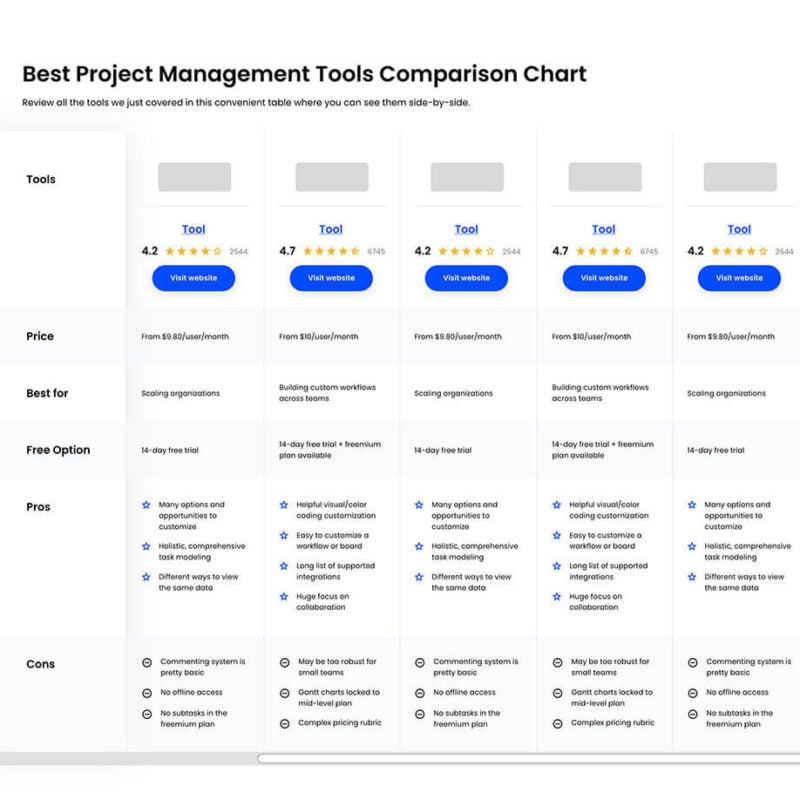
Compare Software Specs Side by Side
Use our comparison chart to review and evaluate software specs side-by-side.
Compare SoftwareAutres outils logiciels de gestion de projet à considérer
Bien qu’elle ne fasse pas partie de cette évaluation du logiciel de gestion de projet, la liste ci-dessous présente d’autres options d’outils de gestion de projet. Consultez-les si vous recherchez le meilleur logiciel de gestion de projet pour votre agence ou studio:
- Paymo
Best for time billing
- Backlog
Best project management software for software developers
- MindGenius
best built-in mind mapping capabilities
- Teamwork.com
Best for remote teams
- Asana
Best online task management software for complex projects
- Hubstaff
Best easy agile project management software
- Planview Clarizen
Best enterprise project management software
- FunctionFox
Best for creative teams and agencies
- Confluence
Best for software teams
- Basecamp
Best for straightforward planning and management by project
Vous voulez de l’aide pour réduire les options?
Cet outil est très utile. Nous nous sommes associés à Crozdesk pour vous donner accès à leur “Software Finder”.
Si vous saisissez certains détails sur votre projet et les fonctionnalités que vous recherchez dans un outil de gestion de projet, une liste d’outils correspondant à vos préférences sera générée. Vous fournissez votre email, et ils vous envoient un beau guide PDF avec un résumé de vos meilleures options.
Le meilleur – Les logiciels de projet qui ne font qu’une chose
Mais qu’est-ce qu’un “bon outil de gestion de projet” ? Il y a beaucoup d’outils qui font un seul travail lié à un projet, vraiment bien. Il s’agit d’outils spécialisés dans la planification de la gestion de projet, l’ordonnancement, le suivi des jalons, la communication, la gestion des tâches, le reporting, etc. Des outils comme Slack, Microsoft Project, Harvest et Dropbox sont des exemples de ces outils de projet spécialisés. Les outils spécialisés peuvent être formidables, surtout pour une petite équipe, ou lorsqu’il s’agit de travailler avec des besoins spécifiques ou peu de clients.
Les outils de gestion de projet vous permettent de travailler plus intelligemment
Cependant, si vous n’êtes pas prudent, vous vous retrouvez avec une collection de logiciels de projet SaaS en ligne qui ne se synchronisent pas correctement. Vous utilisez un outil de communication, un autre pour le partage de fichiers et un autre encore pour la gestion des tâches. Et vous finissez par saisir les mêmes données dans chaque application.
Il y a peut-être une meilleure solution? Au lieu d’utiliser des outils dédiés et de les lier manuellement entre eux, utilisez un outil de gestion de projet avec une fonctionnalité de données partagées intégrée. Cela facilite un meilleur briefing, une communication contextuelle et une gestion plus simple des équipes de projet et des clients.
Qu’est-ce qui fait un bon outil de gestion de projet?
Dans la définition d’un bon outil de gestion de projet numérique, nous nous sommes concentrés sur les outils qui facilitent l’aspect “pratique” d’un projet. Cela signifie réunir les gens pour créer quelque chose d’incroyable dans le monde digital.
Que faut-il donc pour livrer un projet numérique? Nous avons identifié cinq aspects clés de la fonctionnalité qui, à notre avis, facilitent la réalisation de projets digitaux. Vous pouvez les utiliser pour vous débarrasser de vos post-it, spreadsheets et emails ainsi que pour exécuter votre projet plus efficacement.
- Listes de tâches – Les projets se composent de sous-tâches et de sous-sous-tâches, de listes de contrôle et de tâches à faire. Il est essentiel pour la bonne exécution d’un projet d’être en mesure de déterminer ce qui doit être fait, quand et par qui.
- Horaires – Les délais, les calendriers et les diagrammes de Gantt vous aident à savoir où se situent les tâches dans le cadre plus large d’un projet. C’est la clé pour être en mesure de livrer un projet à temps.
- Partage de fichiers – Personne n’aime avoir à perdre du temps à chercher des fichiers au hasard. La capacité d’organiser et de partager les fichiers et les informations clés d’un projet est importante pour réaliser un projet efficacement.
- Communication – La communication contextuelle spécifique à un projet pour régler les choses rapidement et discuter avec votre équipe et votre client est vitale pour garder les tâches sur la bonne voie.
- Rapports – En tant que gestionnaires de projet, il est de notre devoir de savoir si notre projet est sur la bonne voie ou non. Il est donc essentiel de connaître l’état d’avancement des tâches d’un projet, sera-t-il livré à temps ou non?
Mais il vous manque des choses…
Oui, beaucoup. Avec tout logiciel de gestion de projet, il faut faire la distinction entre ce qui est essentiel et ce qui ne l’est pas. Dans nos critères pour les outils de gestion de projet, nous nous sommes concentrés sur l’exécution d’un projet. Cela signifie que nous ne nous sommes pas concentrés sur la planification, la facturation ou d’autres fonctionnalités. C’est pour cela que nous n’avons pas mis l’accent sur l’estimation préalable au projet, ni sur les aspects postérieurs au projet du logiciel de gestion de projet. Consultez notre article sur les meilleurs outils de planification des ressources, si cela vous intéresse. Cela dit, il existe de nombreuses similitudes entre ces outils. Nous avons essayé de mettre en évidence les fonctionnalités ou les caractéristiques qui, selon nous, les rendent uniques.
Qu’en pensez-vous?
Selon vous, que manque-t-il dans cette évaluation des outils de gestion de projet? Vous avez des critères différents pour choisir un outil de gestion de projet pour votre agence ou studio? Nous aimerions avoir vos suggestions, conseils ou idées sur l’utilisation de ce type de logiciel de gestion de projet. Pourquoi ne pas les partager en utilisant les commentaires ci-dessous?
